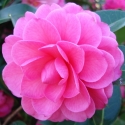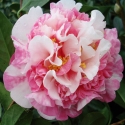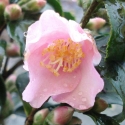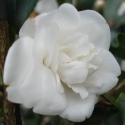BACK
Versatile Camellias
They can be used in so many ways... topiary or shaping, hedges, shrub in the garden or a small tree, you just can’t go past them. Camellias are hardy, evergreen, easy to grow, and depending on the variety, can provide colour during autumn and winter, with flowers appearing as early as March through to November. Many have a delicate fragrance.





Growing Camellia as specimen shrubs and trees
Choose a location that best suits the likes and dislikes of your chosen Camellia – check on the plant label, our website, or ask for guidance from nursery staff.
Prepare the area by removing weeds and making a hole for the plant slightly larger than its root ball. Add some well-rotted compost or animal fertiliser to the hole and dig in well, making the soil nice and crumbly.
Remove the plant from its bag, use scissors to cut away the plastic or if it is in a pot, lay the Camellia on its side on the grass and gently press on the sides to loosen the root ball inside. You should then be able to gently pull the plant out of the pot.
Before placing the plant in the hole, gently scrape away the top 1 cm of potting mix from around the trunk or stem, exposing the fine root hairs and removing any weed seed that may be lurking there, and then place it in the hole. Add some soil on the top to replace the 1 cm that you removed, taking great care not to position it any lower or higher than the level of the potting mix when it was in the bag or pot.
Now fill the rest of the hole with loose, crumbly soil rather than great heavy clods of turf.
Tamp the soil down until the hole is filled and the root ball is snugly tucked in. Apply a layer of mulch to the soil but keep it clear of the Camellias trunk to avoid causing collar rot. Water in well with a gentle stream of water taking care not to disturb the soil or compost.
Maintenance
Trim to encourage desired shape and maintain plant health, keep weed free, and fertilise twice a year with Camellia Fert.
We suggest you don’t trim in late autumn, as the wounds from the cuts, and tender new growth, could be adversely affected by winter weather conditions.
BACK
HL Nurseries Limited t/a Wairere Nursery
826 Gordonton Road, R D 1, Hamilton 3281 Ph: (07) 824 3430 Email: